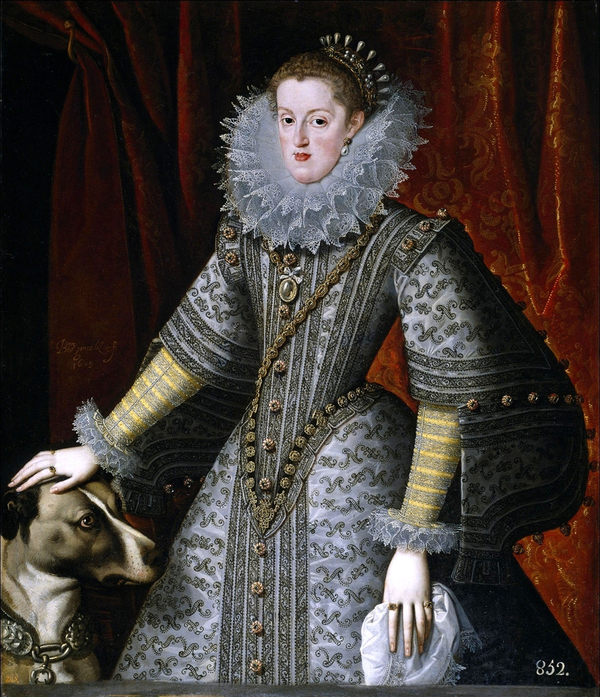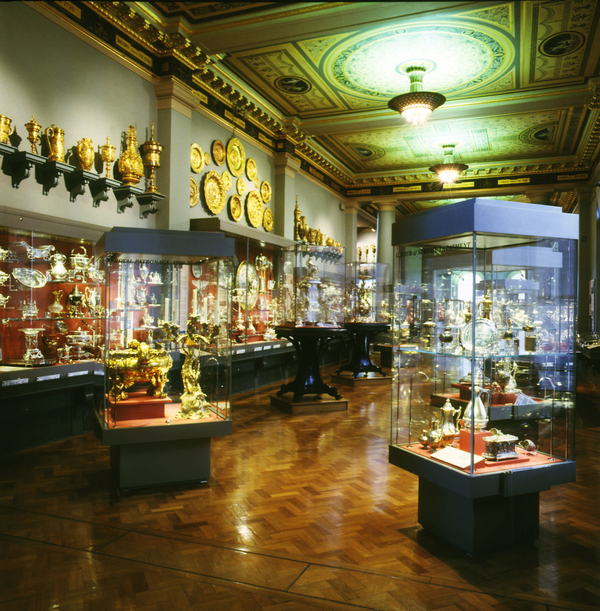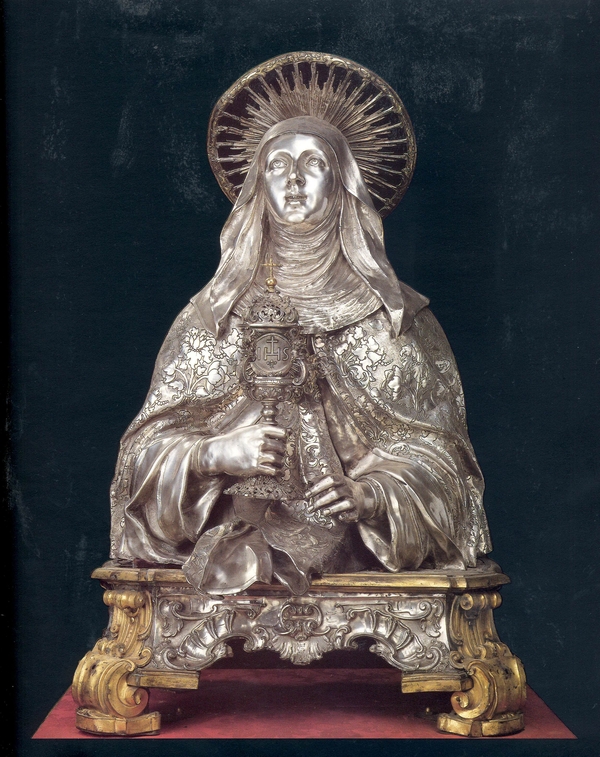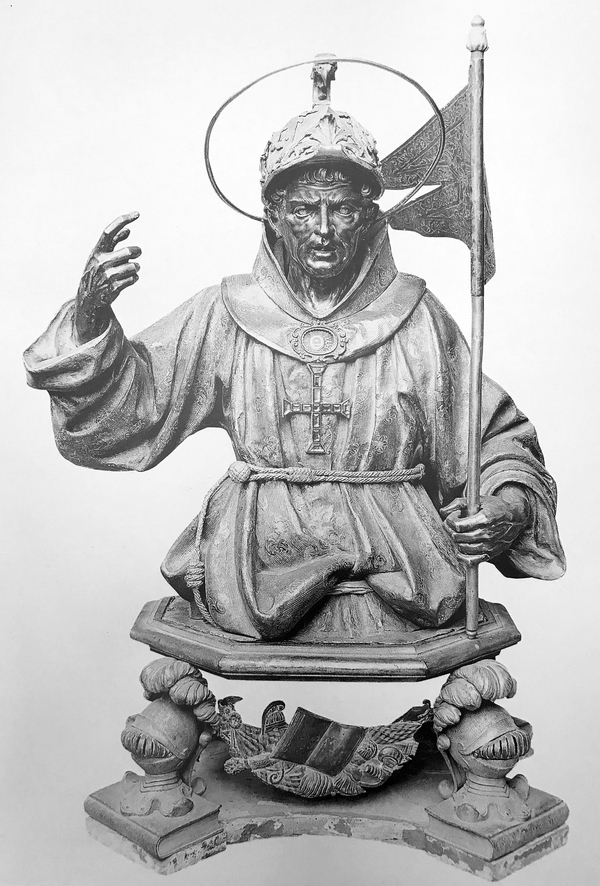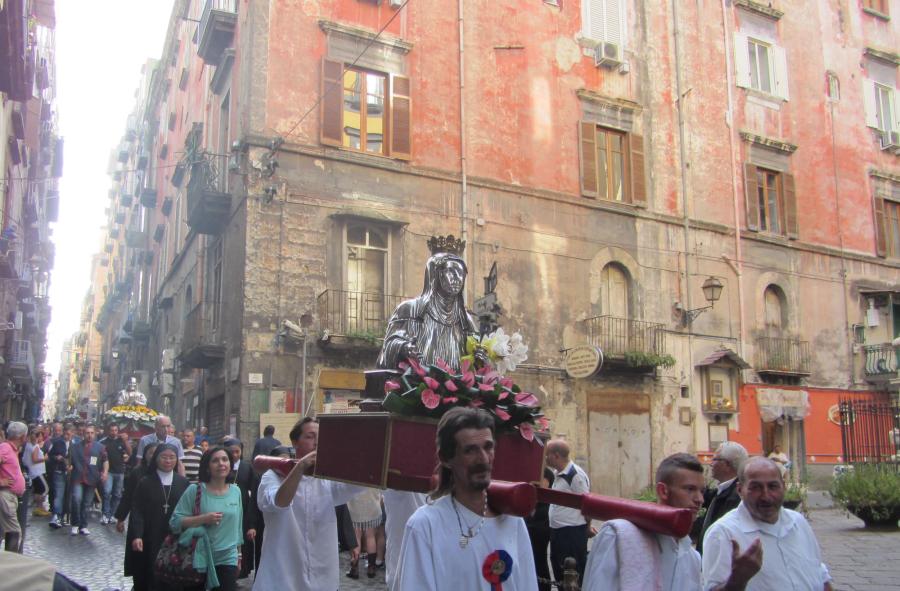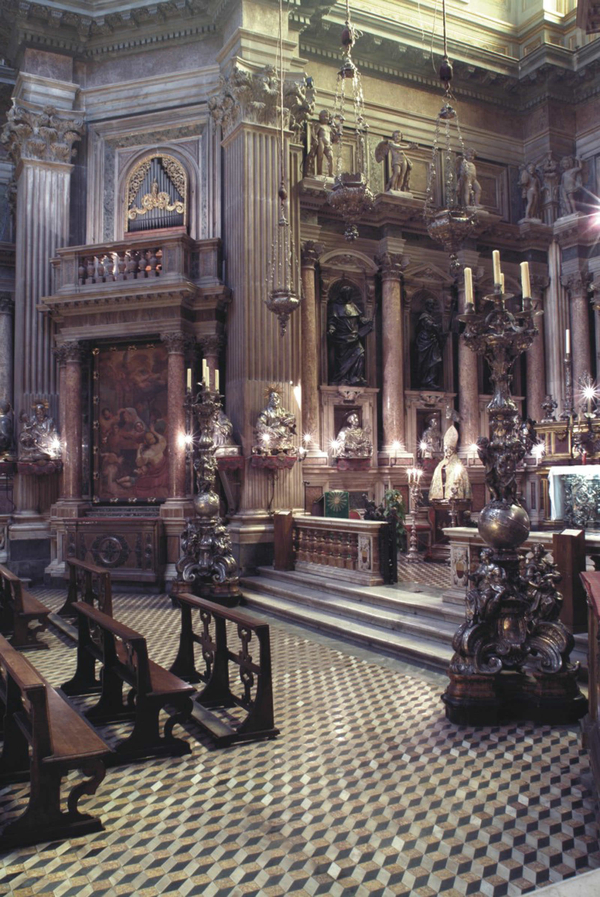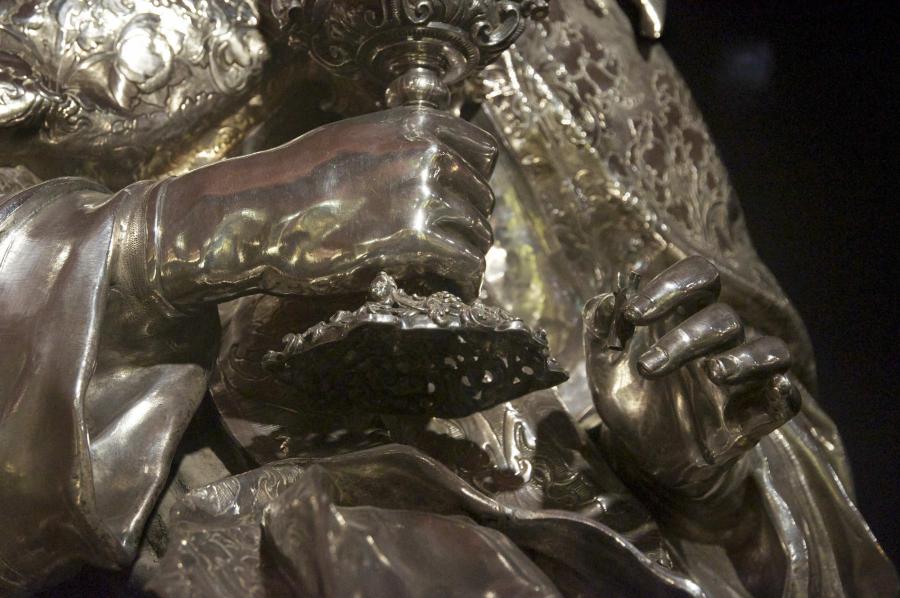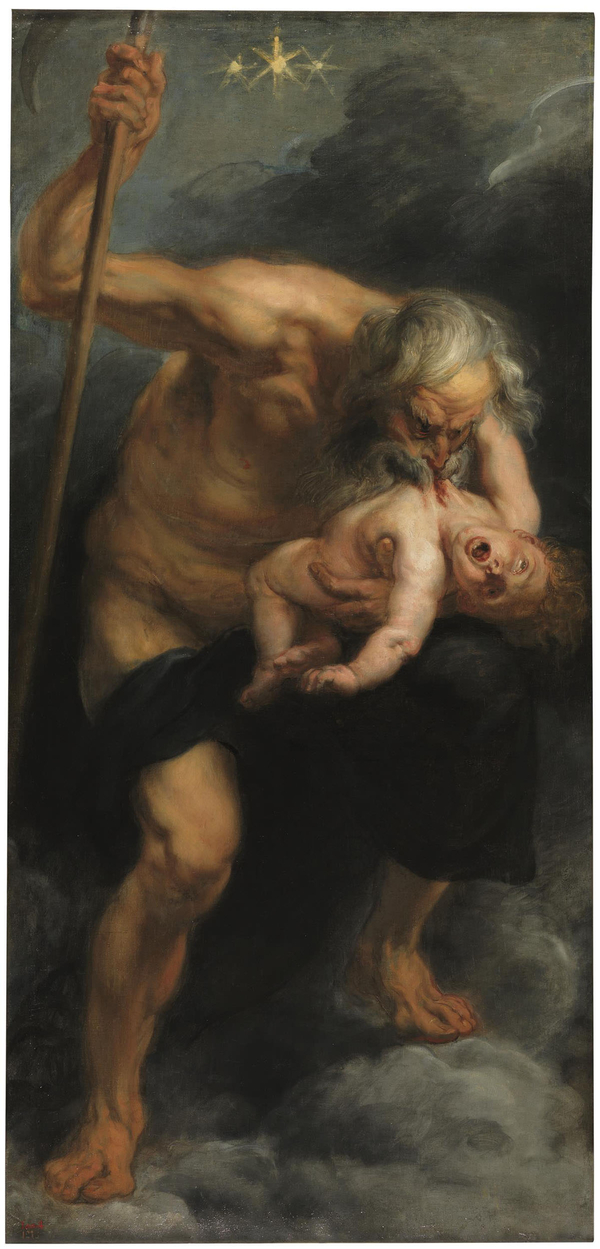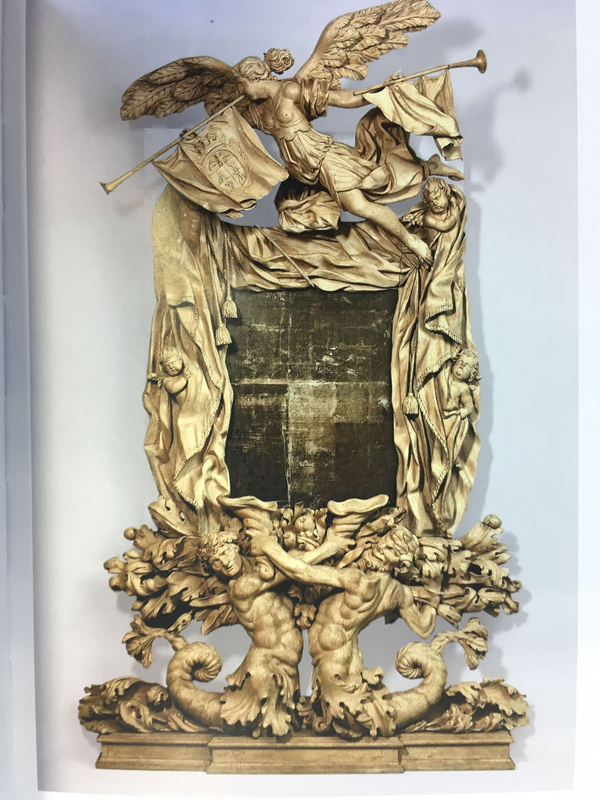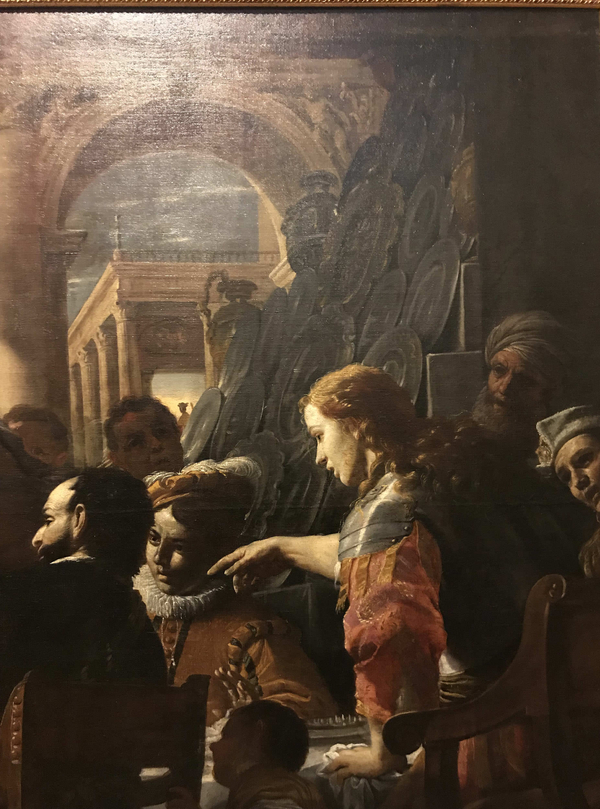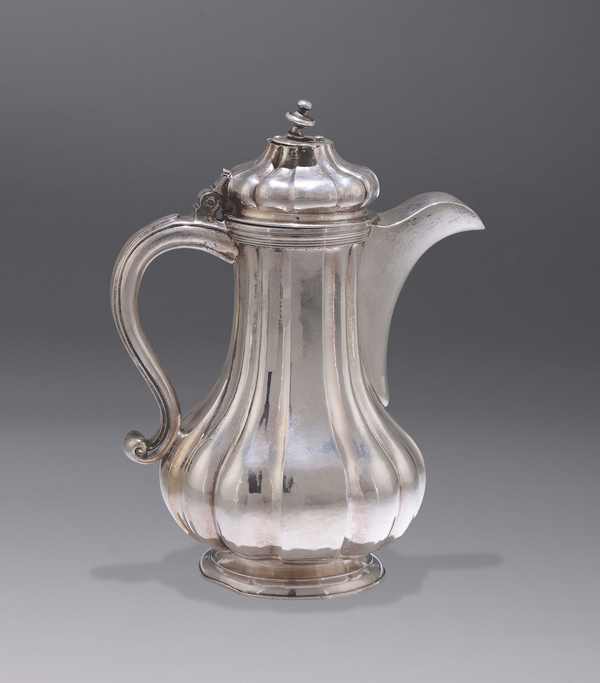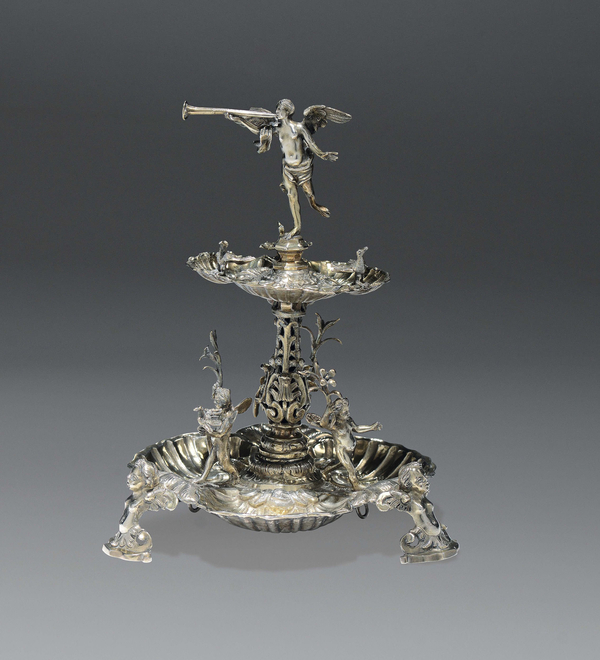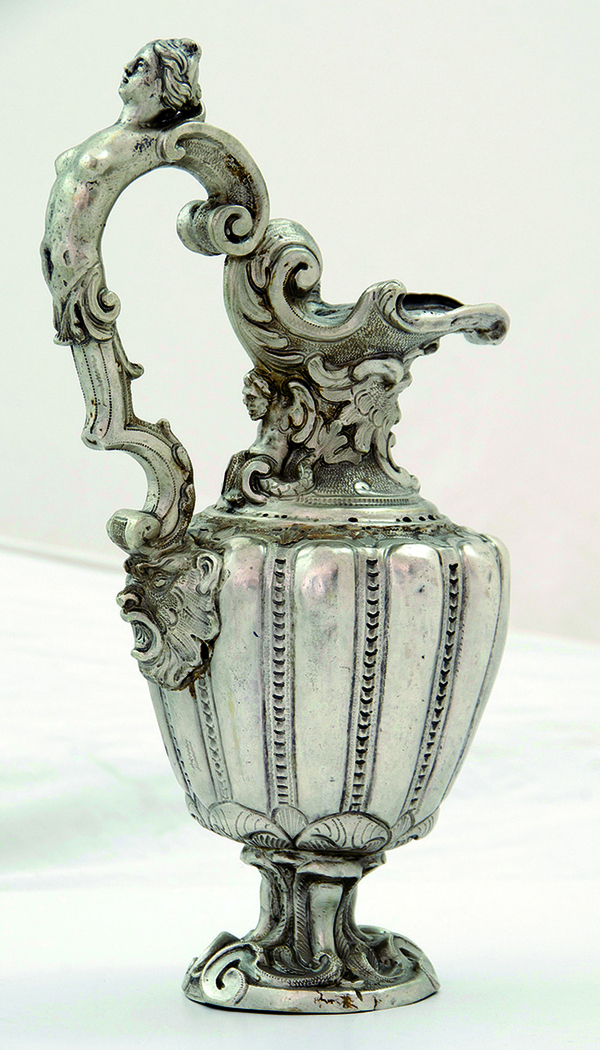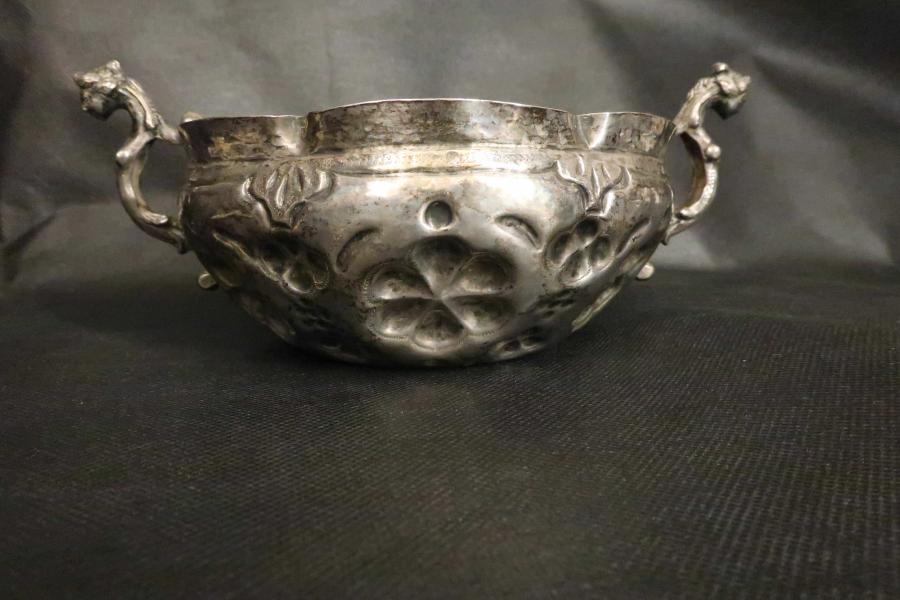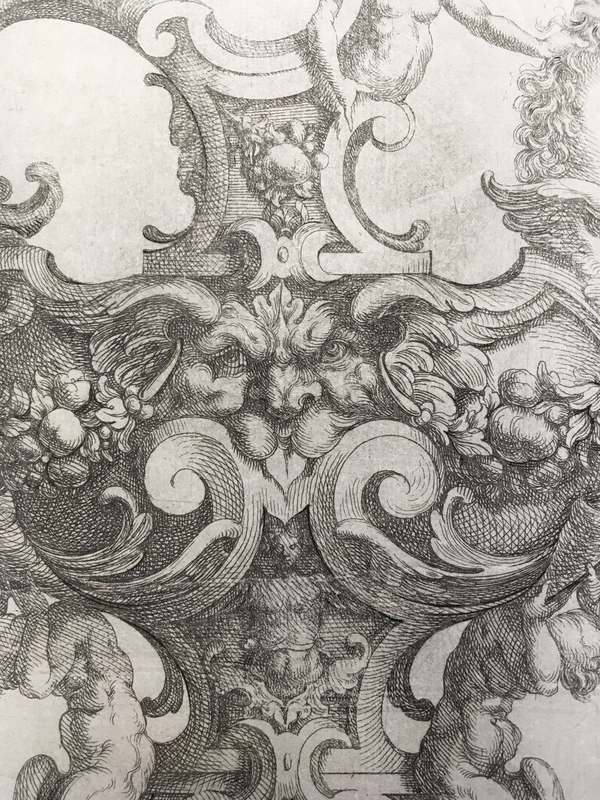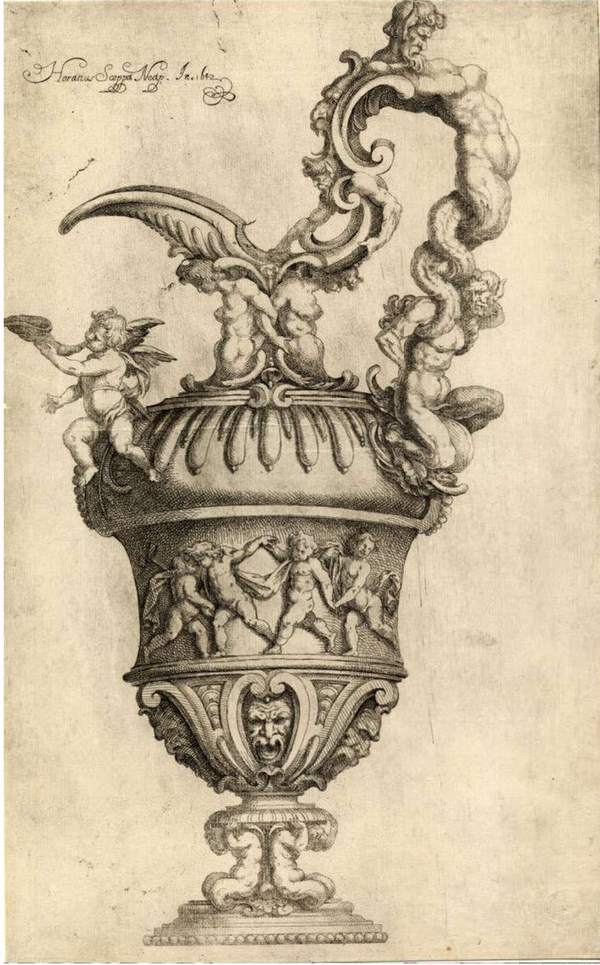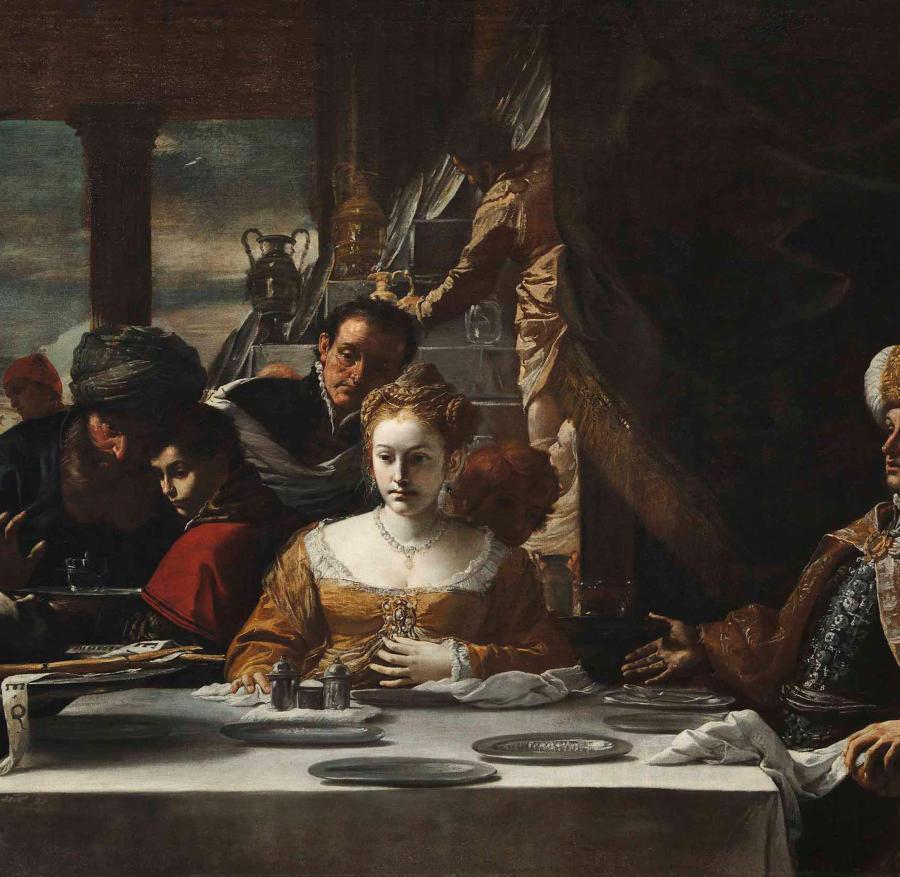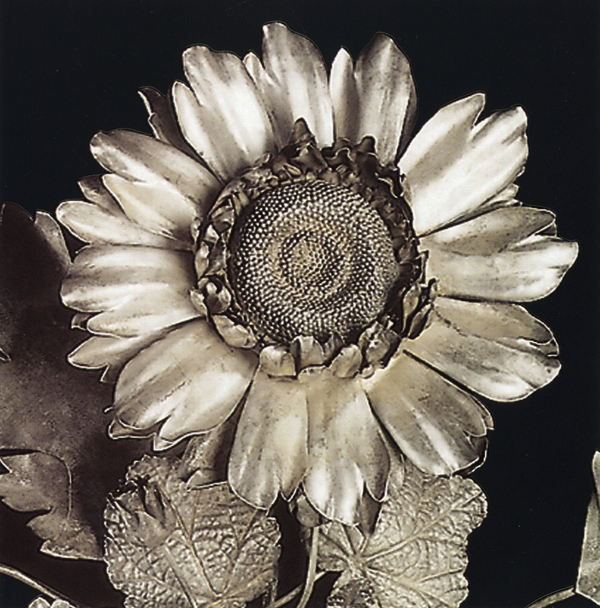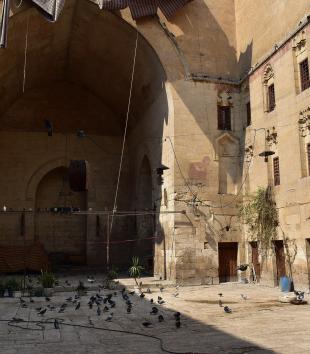The implications for non-Western societies and for subaltern and excluded subjects around the world would be quite different if colonialism, imperialism, racism, and sexism were thought of not as regretful by-products of modern Europe, but as part of the conditions that made the modern West possible.
Edgardo Lander, “Eurocentrism and Colonialism in Latin American Thought”1
For without exception, the cultural treasures he surveys have an origin which he cannot contemplate without horror. They owe their existence not only to the efforts of the great minds and talents of those who created them, but also to the anonymous toil of their contemporaries. And just as such a document is not free of barbarisms, barbarism taints also the manner in which it was transmitted from owner to owner.
Walter Benjamin, Theses on the Philosophy of History
- 1Edgardo Lander, “Eurocentrism and Colonialism in Latin American Thought,” Nepantla. Views from the South 1, no. 3 (2000): 525.
Silver is a strange and paradoxical material, endowed with peculiarly transformative capacities in the early modern world. Brutally extracted from the earth in the Andes, it fed Spain’s imperial war machine, fired the engine of capitalism with coins, currency and chance of profit, redefined commodity frontiers and fueled global trade.1 But at the same time, in Europe it was associated with purity and refinement of all kinds. The silver sword and the silver-tipped cane designated political prowess and distinction; silver thread in a gown (Fig.1), silver épargnes (multi-armed display stands), and silver teapots shimmered with social sophistication; and silver reliquaries, carte di gloria (mass cards), pyx, chalice, and “plate,” communicated the divine to humankind (Fig. 2). Politically, socially, and spiritually silver bestowed and conveyed immaculacy and polished sophistication. Its sheen promised elevation and was a guarantor of success. Yet silver also marked the ruthless plunder of European colonialism, the genocidal degradation of native workers, and ecological ruination (Fig. 3).2 Brutal conquest; remorseless exploitation; social, political, and religious luster. Was one somehow necessary for the other, threaded through the dark machinations of European power? Silver is a particularly fraught, agile, and transformative material. Embedded in power relations, coloniality, and matters of purification, early modern silver was a particularly generative site. Might its peculiar paradoxes be usefully thought in terms of a materiality of trauma? This essay is a first step in this direction, focusing on the fate of silver in Naples, as capital of the colonized. Naples, in its position as viceregal capital of the Spanish empire in Europe was a key site in which, through which, and by which brute colonialism was transformed into elite culture whereby, in turn, that colonialism was justified, upheld, and extended.
- 1Most of that silver came first from the Viceroyalty of Peru, and specifically from Potosí, home of the fabulous silver mountain, where the discovery of vast silver reserves by the Spanish in 1545 was of global consequence. Later Mexico became Spain’s silver engine. On Mexico, see D. A. Brading, Miners and Merchants in Bourbon Mexico 1763-1810 (Cambridge: Cambridge University Press, 1971), 6-7. On Potosí, see Kris Lane, Potosí: The Silver City that Changed the World (Berkeley: University of California Press, 2019).
- 2About 65 million inhabitants of the Aztec-Maya-Caribbean and Inka areas were exterminated in a period of less than 50 years after the Spanish conquest in a demographic catastrophe and the pulverization of societies and cultures. Aníbal Quijano, “Coloniality and Modernity / Rationality,” Cultural Studies 21 nos. 2-3 (2007): 170. The issue of names is embroiled in colonial politics. The name the Inka gave to their own realm of culture was Tawantinsuyu, a vast geographic area stretching along the Andes from central Chile to southern Colombia under Inka control. Tawantinsuyu was an ordered universe of sacred dimensions. Textiles, goldwork, and silverwork were imbued with a sacred aura. Wakas, manifestations of the sacred, which included natural features, buildings, textiles, bodies of venerated ancestors, and silver sculptures, marked its landscape. Tom Cummins, “Silver Thread and Golden Needles: The Inca, the Spanish, and the Sacred World of Humanity,” in The Colonial Andes: Tapestries and Silverwork 1530-1830, eds. Elena Phipps, Johanna Hecht, and Cristina Esteras Martín (New Haven: Yale University Press, 2004), 5
While scholarship on the historical extraction and working of silver in the so-called “New World” is anthropologically informed, politically attuned, and attentive to historical and ecological issues, when it comes to silver artifacts in Europe, scholarship and gallery displays are overwhelmingly connoisseurial, drily technical, narrowly specialist, and aridly drained of political engagement (Fig. 4).1 In a parallel and related bifurcation, while scholars have engaged energetically with the politics of colonialism in Andean silver production, they have all but ignored the politics of colonialism in Europe, especially in the Italian peninsula, whose way was paved in silver. These bifurcations are not the result of mere oversight. Issues that are materially and politically conjoined have been kept apart by European scholarship overwhelmingly driven by a point of view over-identified with the European elites.2 While scholars have been alert to silver’s economic role in Spanish rule, they have been slow to recognize its cultural role as an intrinsic part of imperialism—especially within Europe. Existing art historical studies fall prey to or collude in the glamor (at once superficial, material, profound) of colonialist effects. This is particularly marked with regard to the study of precious metals, although it extends way beyond them. Jennifer Montagu, one of the few art historians to engage with silver baroque artifacts, approaches them as “objects for the display of virtuoso silversmithing” and “symbols of their owners’ wealth.”3 What is now urgently required is art historical analysis that goes beyond conjugating colonial history and the isolated study of fine objects.
- 1For a range of positions, see L. David Boylan, Spanish Colonial Silver (Santa Fe: Museum of New Mexico Press, 1974); Jason Moore, “‘Amsterdam is standing on Norway,’ Part I: The Alchemy of Capital, Empire and Nature in the Diaspora of Silver, 1545-1648,” Journal of Agrarian Change 10, no. 1 (2010): 33-68; Jason Moore, “‘This lofty mountain of silver could conquer the whole world’: Potosí and the political ecology of underdevelopment, 1545-1800,” Journal of Philosophical Economics 4, no. 1 (2010): 58-103; Allison M. Bigelow, “Women, Men, and the Legal Language of Mining in the Colonial Andes,” Ethnohistory 63, no. 2 (2016), 351-365; Rossana Barragán, “Working Silver for the World: Mining Labor and Popular Economy in Colonial Potosí,” Hispanic American Historical Review 97, no. 2 (2017): 193-210.
- 2In its persistently empiricist—even positivist—approach, reliant on archival documents without subjecting the archive itself to critical scrutiny, too much art history tends uncritically to echo the voices of the powerful.
- 3These claims occur in a single sentence in Jennifer Montagu’s Gold, Silver and Bronze: Metal Sculpture of the Roman Baroque (Princeton: Princeton University Press, 1996), 94. The two claims are bundled together, although their relationship is far from straightforward.
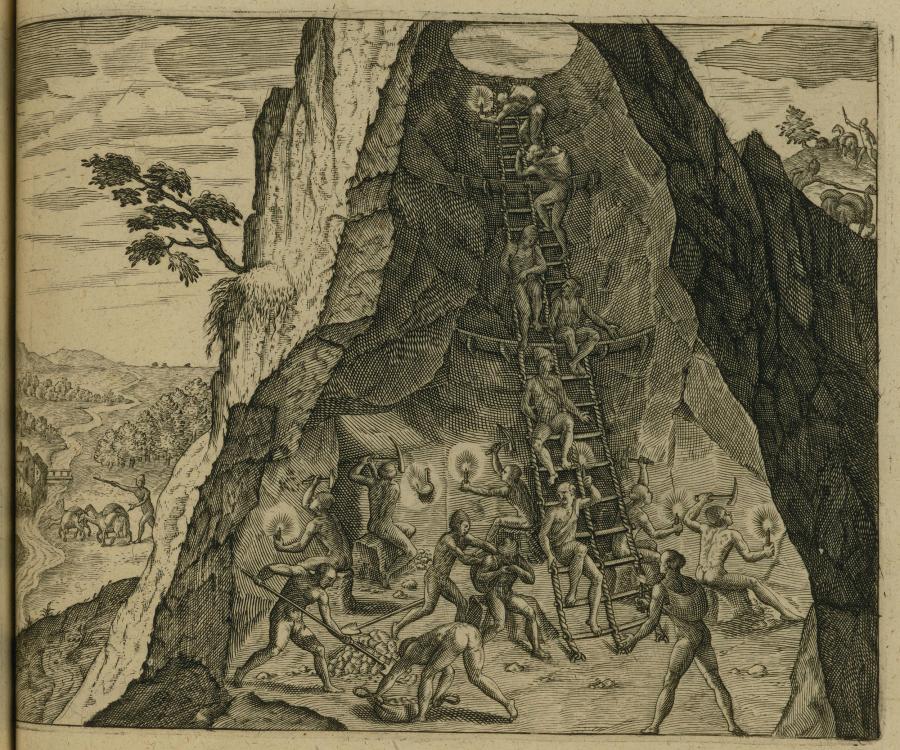
Fig. 3 Theodor de Bry, Wie die Indianer das Goldt aus den Bergen graben (detail), engraving, Image: 14.8 x 19 cm, page: 35.3 x 23.3 cm, from Theodor de Bry, America, part 9 (Frankfurt am Main: Bey Wolffgang Richter, 1601). Although not an accurate depiction, this image evidences awareness in European circles of the deplorable conditions in Andean silver mines. John Carter Brown Library.
Spanish rule in the so-called “New World” and Spanish rule in Europe—specifically the Kingdom of Naples—were joined and enabled by the flow of silver.1 The vast quantities of silver and gold from the New World supported Spanish imperialism within Europe.2 If the crucial role of silver in conjoining these two forms of colonialism is recognized, it becomes impossible to sustain the dichotomies of current scholarship.
The disjunctive abyss and hiatuses in the scholarship on silver are themselves revealing. Something untoward takes place in the discursive production of silver as it traverses the Atlantic, from raw material, recognized as enmeshed in exploitation and colonialism, to refined elegant object, produced as if by magic by mostly anonymous silversmiths, celebrated as virtuosic and sophisticated, a splendid marker of the exquisite taste of the elites. This prompts the question: in what ways might the conventional interpretation of silver in Europe have to be overturned for its politics to be exposed? Are the conventional taxonomies in fact ways to avoid engagement with material trauma or even its effects?
- 1“An excess of confidence has spread all over the world regarding the ontology of continental divides,” writes Walter Mignolo. “An excavation of the imperial / colonial foundation of the ‘idea’ of Latin America . . . will help us unravel the geo-politics of knowledge from the perspective of coloniality, the untold and unrecognized historical counterpart of modernity.” Walter D. Mignolo,The Idea of Latin America(Malden: Blackwell, 2005), x-xi. For critique of Mignolo, see Silvia Rivera Cusicanqui, “Ch'ixinakax utxiwa: A Reflection of the Practice and Discourse of Decolonization,”The South Atlantic Quarterly 111, no. 1 (2012): 95-109.
- 2Silver and gold charged the course of European politics both directly and indirectly. The windfall of the Indies was celebrated repeatedly in imperial discourse marveling at the treasures granted by Providence to support Charles V's endeavors from the arrival in 1519 of Mexican gold which saved him from bankruptcy at about the time that his election as Holy Roman Emperor was announced in Barcelona. See Roger Merriman, The Rise of the Spanish Empire in the Old World and the New, vol. 3 (New York: Macmillan, 1934), 45; Elvira Vilches, New World Gold: Cultural Anxiety and Monetary Disorder in Early Modern Spain (Chicago: The University of Chicago Press, 2010), 26
By thinking of silver in relation to coloniality, its peculiar capacities to interfuse discourses of exploitation and redemption, refinement and salvation come into focus, which in turn helps us to see silver otherwise.1 Walter Mignolo argues that coloniality refers to the logic of domination and exploitation veiled under the language of redemption, and the idioms of modernization and progress. This is not to be confused with colonialism, which refers to specific historical periods of imperial domination, whereas coloniality refers to the logical structure of colonial domination and emerges in the discovery and conquest of the Americas by Europeans.2 To date, decolonial critique focuses on a critique of eurocentricism in relation to subalternized and silenced knowledges. This model occludes recognition that colonization took places also within Europe and—crucially—the degree to which elite culture in Europe was constructed directly or indirectly through discourses of coloniality.3
What interests me here is silver’s enmeshment in the double helix of power systems of court and colonialism on both sides of the Atlantic and the ways in which silver was wrought to endow rich Europeans with glittering allure and shiny irreproachability beyond the display of something already given or simple economic value. In other words, the culturaleffects of silver.4
Baroque silver held peculiar significance as material of sacred and liturgical objects, marker of social niceties and refinement, as engine of the commodity frontier of the Spanish empire, and as justification for calculated exploitation and cruelty.5 If early modern silver was marked materially by trauma, how, if at all, did it efface its own traumatic history through discourses of holiness, brightness, and refinement? Hence is there a material affect, a materiality of trauma, or its effacement? This essay considers specific objects made in colonial Naples in relation to the atrocities of empire, not in order to expose one literally represented in the other—in a sense, their relationship depends on a refusal of any direct representation or acknowledgement—but to discern traces, draw connections, and see one in light of the other.
- 1“What are the differences between existing critical projects and de-colonization of knowledge?” Walter D. Mignolo, “Introduction: Coloniality of power and de-colonial thinking,” Cultural Studies 21 nos. 2-3 (2007): 155. See also Quijano, “Coloniality and Modernity / Rationality.”
- 2Mignolo, The Idea of Latin America, 6-8. Aníbal Quijano locates the coloniality of power as emerging in discussions about whether or not Indians had souls. See Aníbal Quijano, “Raza, etnia y naciòn: cuestiones abiertas,” in José Carlos Maritegui y Europa: la otra cara del descubrimiento, ed. Roland Forgues (Lima, Peru: Amauta, 1992), np.
- 3“Spanish dominion” has, however, been long recognized: a series of distinguished historians, including Geoffrey Parker, C. R. Boxer, Anthony Pagden, has plotted its course. But “Spanish dominion” is a polite way to miss the point when territory was governed by military occupation. That is colonialism and that occurred within Europe by Spain.
- 4Strikingly neglected is a critical address of the role of art and culture as part of the nexus of coloniality and Spanish rule across its dominions particularly within Europe. A more or less Spenglerian model dependent on a homogenizing view of “Europe” dotted across with specialist studies of specific localities remains the default. The challenge is to forge critical interpretations of the wider dynamics without resorting to mere periodization or outworn formulae, such as “Counter Reformation” and “centers and peripheries,” while also paying close attention to specificity and differences across those different localities. There remains within art historical practice an urgent need to be more alert to power and its operations: not to think of power as something that pre-exists subsequent representation in art and architecture, festival apparati, or processions, but rather of it as always being produced, reproduced, renegotiated and resisted and in which art and architecture play a central role. Those operations of visual culture demand careful analysis in relation to the complex currents of Spanish monarchical dominion and empire, and to what Enrique Dussel calls “geopolitics of knowledge” and what Fanon and Anzaldúa term “body politics of knowledge.” Enrique Dussel, Filosofía de Liberación (México: Edicol, 1977); Frantz Fanon, Black Skin, White Masks (New York: Grove Press, 1967); Gloria Anzaldúa, Borderlands / La Frontera: The New Mestiza (San Francisco: Spinsters/Aunt Lute, 1987).
- 5Spaniards were also concerned with the just basis for governing their overseas territory and with the nature of the Indians whom they were attempting to Christianize. Francisco de Vitoria, Dominican professor at the University of Salamanca remarked in his treatise Concerning the Indies, “The Indians are stupid only because they are uneducated and, if they live like beasts, so for the same reason do many Spanish peasants.” The determination of the Spanish Crown and Church to Christianize the Indians together with their imperious demands for labor to exploit land and mines produced “a very remarkable complex of relations, laws, and institutions.” Lewis Hanke, “The Other Treasure from the Indies: The Histories written by Spaniards on their New World,” in Bartolomé Arzáns de Orsúa y Vela's History of Potosí, ed. Lewis Hanke (Providence: Brown University Press, 1965), 3, 7.
“Vale un Potosí”
The conquest of societies and cultures of what today is called Latin America was part of a constitution of a new world order, a process in which the world’s resources were violently seized and concentrated under the control and for the benefit of a small European minority. I turn now to explore how the lustrous surfaces of silver may be seen as tarnished by the violences silver demanded, made possible, concealed, betrayed, and outshone. I ask whether in some dark way European socio-political charisma actually depended on those very brutalities and their obnubilation. What was it about silver that allowed it to foment, whet, and yet also occlude opportunistic appetites and vicious desires?1
Spanish rule was dealt in silver. Silver was mined in far greater quantities than gold. It spread further (in particular to China and the Far East) and was more widely used in a greater variety of commodities than gold. While gold was king of metals and most prized, the vast bulk of treasure from the Spanish Americas came to Europe in the form of silver. Indeed, the expressions “vale un Perú” (“it’s worth a Peru”) and “vale un Potosí” (“it’s worth a Potosi”) demonstrate that entire histories and geographies of the Indies were reduced to silver.
Early modern silver was saturated in the politics of conquest, but it was acclaimed as a reward to the Spanish monarchy for its defense of Christianity. In his Historia natural y moral de las Indias (1590), Father José de Acosta claimed the discovery of Potosí, “the greatest treasure known to exist in the world,” was destined by Divine Providence for “the time when Emperor Charles V, of glorious fame, held the reins of empire and the realm of Spain and the seigniory of the Indies.”2 He calculated that Potosí produced “year after year” a million pesos for the quinto royal (the 20% tax leveled by the crown on precious metals) and in 1585 alone the fleet carried 111 million silver pesos, and that these sums allowed his readers to:
understand how great is the power that the Divine Majesty has graciously placed in the hands of the kings of Spain . . . since it has been ordained by the lord on high, who both gives and takes away kingdoms from whomever and in whatsoever way he wishes . . . we must humbly petition him to graciously favor the pious zeal of the Catholic king, granting him good fortune and victory over the enemies of his Holy Faith, for it is in this cause that he pours out the treasure of the Indies that God has given him and still has need of much more.3
The discovery of silver in Spain’s new lands and its astonishing treasures was assumed by Spain’s apologists as an indication of divine justice, providence, and fortune. Hence silver was the indelible link between divine will and Spanish worldly power. If silver was a blessing, then the ends to which it was put might also be assumed to be blessed.
- 1“European culture was made seductive: it gave access to power. After all, beyond repression, the main instrument of all power is its seduction. Cultural Europeanization as transformed into an aspiration. It was a way of participating and later to reach the same material benefits and the same power as the Europeans: viz, to conquer nature—in short for ‘development.’ European culture became a universal cultural model.” Quijano, “Coloniality and Modernity / Rationality,” 169.
- 2José de Acosta, Natural and Moral History of the Indies, ed. Jane Mangan, trans. Frances M. López-Morillas (Durham: Duke University Press, 2002), 175.
- 3“He querido dar esta relación tan particular para que se entienda la potencia que la Divin Majestad ha sido servida de dar a los reyes de España . . . Y pues el señor de los cielos que da y quita los reinos a quien quiere y como quiere así lo ha ordenado . . . debemos suplicarle con humildad, se digne de favorecer el celo tan pío del Rey Católico, dándole próspero suceso y victoria contra los enemigos de su Santa Fe, pues en esta causa gasta el tesoro de Indias que la ha dado, y aun ha menester mucho más.”
It has been estimated that the Spanish monarchy minted about 4.55 million kilograms of silver and 2,800 kilograms of gold in the years between 1600 and 1639.1 Outputs during the early-seventeenth century of the gold and silver mints owned by the Spanish monarchy were considerably greater than in the later sixteenth century and were certainly much higher than that in England or France.2 The Spanish inspector in Concolorcorvo’s late-eighteenth-century Lazarillo de ciegos caminantes confronts an Indigenous person:
The Spaniards extracted more silver and gold from the entrails of this land in ten years than your countrymen did in the more than two thousand in which they were established here, according to the calculations of the most judicious men.3
Malleable, soft, ready to be of service, the substance from which other objects had already been made; already passed on, refashioned, reformed, and melted into liquid. It was the preferred medium of valuation and exchange. The value of coins lay in their metal, not in the mint, silver could be assayed for purity, while copper could not. Price was set in silver.4 Reales (worth one-eighth of a peso) bore the Spanish monarchy and emblems of empire as far as the silver circulated (Fig. 5). Reproductive, metamorphic, the material of value itself, silver was coins and profit, the gain of flesh through the material that it imitates. The most mobile of currencies, silver gained charisma from and was equivalent to exchange.
- 1Akira Motomura, “New Data on Minting, Seigniorage, and the Money Supply in Spain (Castile) 1597-1663,” Explorations in Economic History 34 no. 3 (1997): 332. After 1624 Spanish output and market share declined sharply, partly due to the cost of Spain’s war against the Dutch Republic.
- 2Moore, “Amsterdam is standing on Norway,” 35. Relative, not absolute, exhaustion was what really mattered, and this relative exhaustion was a product of the contradictory relations of markets, states, and social classes in Central Europe and the capitalist world-ecology. Large-scale mining did not disappear in Central Europe; its centrality was merely displaced through global expansion. Moore, “This lofty mountain of silver,” 61.
- 3El Lazarillo: A Guide for Inexperienced Travelers between Buenos Aires and Lima, 1773, trans. Walter D. Kline (Bloomington; Indiana University Press, 1965), 165.
- 4Dennis O. Flynn and Arturo Giráldez, “Born with a ‘Silver Spoon’: The Origin of World Trade in 1571,” Journal of World History 6, no. 2 (1995): 207-208.
Silver’s heavenly imbrication
Silver became material to other processes of refinement: political, social, and spiritual. Though gold and silver share many qualities, silver, far more than gold, was analogous to profit, currency, exchange, and transformation, the capacity to exchange something for another and to profit from it, materially, socially, and even spiritually. These qualities were not limited to Spanish colonialism, but they served it well and were well served by it.
Silver to the Spanish was a sign of God’s approval of their American adventures, and it also sparkled with associations of purification, purity, and the highly wrought. While gold was found in a pure state, most silver had to be smelted, refined, assayed, purified, and wrought. In the Andes, the Indigenous peoples’ monopoly on smelting held until the discovery and implementation in 1571 of the amalgamation process of extraction, a technique that pulverized ore with mercury to extract silver on an industrial scale.1
Silver formed particularly close connectivity between the divine and humanity. “This cup is the new testament in my blood, which is shed for you” (Luke 22:20): it was silver that conveyed the divine to humanity in the miracle of transubstantiation in the Mass (Fig. 2). Likewise, silver assumed a close analogous relation with sanctity. Like silver, saints had to be assayed, their purity put to the test. Reliquaries were more often made from silver than from any other material (Fig. 6). Silver encased bones and transformed them into relics. And, as relics, they became capable of bestowing miracles and effecting conversions.2 Silver encapsulated the ability to shift one material into another, to cross continents and traverse cultures, to slip from one form to another, to exchange earth for heaven, and back again. Silver and relics imbricated together could deliver miracles, conduct messages to and from the divine, elevate bones into saints, and transport worshippers to heaven.
Silver caught the eye from afar and materially metaphorized the effulgent saints in God’s glory. Mere wood was systematically replaced by silver in baroque Naples for its protector saints. For the first procession to honor Giovanni da Capistrano on May 13, 1691, the Franciscan fathers replaced their old wooden statue with a new one of silver, better able to catch light and draw attention in a procession through the city (Fig. 7).3 It is documented as finished in 1698 and assayed (stamped) by Antonio Cangiani in the presence of its maker, Francesco D’Angelo, in the Royal Mint.4 It was silver that flowed in processions of amassed protector saints, binding churches, chapels, confraternities, convents, and monasteries to what is still too often assumed to be secular and separate from them: the city, the streets, aristocratic palaces, and the city Seggi (site of local aristocratic governance) (Fig. 8).
Silver slides along, sundering and sealing its beneficiaries, its debtors and those who pay its price. In its face shines a brilliant allure, while behind it trail mayhem, devastation, and despair. Yet silver slips through, passes this by, guileless and pure. The saints guaranteed the silver, just as it guaranteed them, whose relation with matter depended on extraction, refinement, assaying, transportation across the known world, betrayal and disguise. Just as the saints required their work to be done in silver, so it was silver, with its long and bloody trail of expropriation, exploitation, and destruction, that required the saints.
- 1On the amalgamation method, see Alan Probert, “Bartolomé de Medina: The patio process and the sixteenth-century crisis,” Journal of the West 8 (1969): 90-124. The Inkas knew quicksilver, but prohibited its mining because of its toxicity and avoided its name and use. El Inka Garcilaso de la Vega argued that the absence of mercury processing was prompted not by ignorance, but by aversion of the Inka kings to the poisonous effects of mercury; and that in deference to Inka law, Indigenous peoples had suppressed and forgotten this knowledge. The Spanish insisted on using mercury. R. C. Padden, “Editor’s Introduction” to Bartolomé Arzáns de Orsúa y Vela, Tales of Potosí, ed. R. C. Padden, trans. Frances M. López-Morillas (Brown University Press: Providence, 1975), xx. See also Allison Bigelow, Mining Language. Racial Thinking, Indigenous Knowledge, and Colonial Metallurgy in the Early Modern Iberian World (Omohundro Institute: Williamsburg, 2021), 248n31.
- 2On relics, see Peter Dinzelbacher and Dieter R. Bauer, Heilgen Verehrung in Geschichte und Gegenwart (Ostfildern: Schwabenverlag, 1990); Caroline Walker Bynum, The Resurrection of the Body in Western Christianity, 200-1336 (New York: Columbia University Press, 1995); Patrick Geary, Furta Sacra: Theft of Relics in the Central Middle Ages (Princeton: Princeton University Press, 1978); Jean Claude Schmitt, “Le reliques et les images” in Les reliques: objets, cultes, symbols, eds. E. Bozóky and A.M. Helvétius (Turnhout: Brepols, 1999), 145-168; Helen Hills, The Matter of Miracles: Architecture and Sanctity in Baroque Naples (Manchester University Press: Manchester, 2016), 39-62.
- 3Antonio Bulifon, Compendio istorico degl'incendi del monte Vesuvio fino all' ultima eruzione accaduto nel mese di giugno 1698 (Naples: Antonio Bulifon, 1701), 34; Corrado Catello and Elio Catello, Argenti napoletani dal XVI al XIX secolo (Naples: Banco di Napoli, 1972).
- 4Catello and Catello, Argenti napoletani, 184.
Thus silver, even as it shone triumphant and redemptive in the faces of the saints, even as it proclaimed the vast wealth of the Spanish Crown and Neapolitan religious institutions, dragged in its wake exploitation and destruction, human and ecological. Profit for some, silver already owed an unpayable debt, was the blood of others. Its brilliant allure, which charged up desire, was fed by loss and mourning.
Noble Silver and the Silverizing of Naples
More silver reliquary statues were made in Naples than anywhere else in the world.1 From the early-seventeenth century, Naples’s protector saints were concentrated in the gleaming Treasury Chapel of San Gennaro in Naples Cathedral (Fig.9). I have argued elsewhere that this chapel was at once a treasury, bank, and conversion chamber for Spanish silver, and, as such, activated by the liquefying blood miracle of San Gennaro, it worked to secure Spanish domination, co-opt the local aristocracy, and deliver spiritual salvation to dutiful subjects.2
Wrested from the earth by the blood of conquest and the savagery of colonial mining, refined Spanish silver was beaten by Neapolitan silversmiths into beneficence. Wrought, chased, engraved, repoussaged, damascened, embossed, silver metal was transformed into accoutrements of political distinction, niceties of social refinement, and necessities of spiritual communion (Fig. 10).1 Silver was naturalized through artifice, rendered an apparently intrinsic part of “Neapolitan culture,” and it led people closer to God.
The concentration of silver in Naples was not coincidental. The city of Naples was the principal seat of the Spanish viceregency in Europe. Springboard and showcase for Spanish rule in Europe, it was its glittering epicenter, a turning point in silver’s artful trail, where silver as product of Spain’s New World empire, sign of divine approbation and the monarchy’s all-encompassing powers coalesced in a dazzling dominion greedily gazing further afield.
- 1The principal techniques were embossing, chasing, and engraving. Embossing is carried out from the reverse or inside of the object to raise the surfaces of the vessel in low relief. Engraving is incising of lines with a very sharp point to scrape away the surface of the silver. Chasing, unlike engraving, means the design can be seen on the reverse or inside of the piece. See Richard Came, Silver (New York: G. P. Putnam & Sons, 1961), 12-14.

Fig. 11 Silver sculpture of “America,” one of four silver sculptures of the Four Continents, made to models by Lorenzo Vaccaro, commissioned for King Charles II by Fernando de Benavides, count of Esteban, viceroy of Naples 1687-95, and completed in 1695 (now in the Treasury of Toledo cathedral). © Cabildo Catedral Primada de Toledo. Photo: David Blàzquez.
More than 350 workshops were based in the Orefici quarter, in each of which worked mostly family groups of several artisans.1 Entire generations of silversmiths included the Maiorani, Porzio, Treglia, Avitabile, Buonacquisto, Carpentiero, d’Aula, Guarniello, and Del Giudice families of great prestige in the seventeenth century. They produced vast quantities of silverware for churches, convents, monasteries, aristocrats, and rich merchants in Naples, its Kingdom, and beyond.2 Thus Aniello Treglia, who specialized in large works, made the marvelous altar frontal for the Jesuit Colegio Imperial in Madrid.3 Many of these magnificent silver works were bound for the Spanish court, the viceregency, and its entourage in Naples and Madrid. These are forms of mimetic capital par excellence.4 Silver sculptures of the Four Continents, made to models by Lorenzo Vaccaro, were commissioned for King Charles II by Fernando de Benavides, count of Esteban, viceroy of Naples 1687-95, and completed in 1695 (now in the Treasury of Toledo Cathedral) (Fig. 11).5 Female allegorical figures of the Continents, studded with precious stones, sit on a globe displaying a map of their respective continent: a celebration of world power in the material that enabled it. Viceroy Duke de los Arcos commissioned from maestro Cornelio Spinola in July 1647 a silver statue for the Virgin of the Carmine in thanks for the death of Tommaso Masaniello, the popular leader of the anti-Spanish rebellion of 1647.6 Mercurial silver thus transformed bloody political triumph into religious piety. In these ways silver, taken from Latin America, wrought by Neapolitan silversmiths in Spanish-occupied Naples, was twisted to celebrate the defeat of Neapolitan resistance to that same Spanish occupation, to glorify Spain’s colonial rule, and shore up its religious collaborators. Silver fortified Spain’s global imperial ambitions culturally at least as much as economically. Palaces glittered in what were known as “noble” metals (unlike base metals, gold and silver did not merge with lead during assaying). Saturn, unable to digest gold and silver, vomited them up, purified, the noblest of his children (Fig. 12). Pure but intolerable, disgorged from the earth’s dark entrails, silver’s shine belied its murky origins to lend its glamor to the beneficiaries of pillage and conquest.
Silver’s capacity to be melted down, transformed and traded resulted in very little surviving of the innumerable silver objects manufactured in Naples. Changes in fashion and wartime requisitions, especially the seizures under Napoleon, filled the vats with marvelous objects to be melted down.7 They have to be reimagined now from lists in inventories, bills of payment, and suggestive oil paintings.
- 1Corrado Catello, “Argenti” in Civiltà del Seicento a Napoli, vol. 2 (Naples: Electa Napoli, 1998), 307. Many churches and chapels boasted silver statues. An inventory of 1705 lists 27 silver statues in the convent of Santa Chiara, of which no fewer than 12 belonged to the convent, and the rest to confraternities. Alessandra Perriccioli, “Gli argenti del tesoro del monastero di S. Chiara in Napoli” in Annali della Facoltà di Lettere e Filosofia, Università di Napoli (1974-75), 228-229.
- 2Corrado Catello, “Tre Secoli di argenteria napoletana” in Tre Secoli di argenti napoletani, ex. cat. Castel Sant’Elmo (Naples: Electa Napoli, 1988), 13.
- 3Catello and Catello, Scultura in Argento nel Sei e Settecento a Napoli, 40.
- 4Stephen Greenblatt has evoked the notion of “the reproduction and circulation of mimetic capital.” For him, the images that matter, that merit the term capital, are those that “achieve reproductive power, maintaining and multiplying themselves by transforming cultural contacts into novel and often unexpected forms.” Mimesis, for Greenblatt, is a social relation of production. Representations are not only products of social relations but are themselves social relations. Stephen Greenblatt, Marvelous Possessions: The Wonder of the New World (Oxford: Clarendon Press, 1992), 6-8.
- 5Catello, “Argenti,” 308; Francisco Javier Montalto Martín, “América” in Ysabel, la reina católica: una mirada desde la catedral primada, exh. cat. Toledo Cathedral (Toledo: Toledo Cathedral, 2005), 655-57. See also Paola D’Agostino, “Neapolitan metalwork in New York: Viceregal Patronage and the Theme of the Virgin of the Immaculate Conception” in Metropolitan Museum Journal 43 (2008) which contains excellent images. Bernardo de Dominici, Vite de’ Pittori, Scultori ed Architetti Napoletani, vol. 3 (Naples: Francesco e Cristofero Ricciardi, 1743).
- 6Fausto Nicolini, ed., Tratte dai Giornali copiapolizze dell'antico Banco della Pietà (Naples, 1950-52); Corrado Catello “Tre Secoli di argenteria napoletana,” 14.
- 7An outstanding instance was the French Napoleonic invaders’ seizing and melting down the “Piatti di San Giovanni,” a series of vast silver platters (“bacini” or “bacilli”), presented annually between 1680 and 1737 on the feast of St. John the Baptist, patron saint of Florence, to the Grand Duke of Tuscany, in accord with the will of Cardinal Lazzaro Pallavicini. See Montagu, Gold, Silver & Bronze, 92.
In Naples the sumptuous silver collections of the Prince of Avellino, Marquis of Campolattaro and duke of Atripalda were particularly renowned.35 Gold and silver were complicit in producing the “refined” and graceful sheen of aristocratic habitus. Silver is the earth’s most reflective metal; its surface pools, flows, and glistens like water. One has to imagine the few objects that have survived shimmering and alive with fulguration, rather than dully imprisoned behind glass, as they are in museums today. Shimmering and glinting, the court was enchanted by its own reflection in silver mirrors on walls and ceilings, sconces, and various accoutrements. The erotic lability of the mirror, its capacity at once to desubstantialize and beglamor, its playing exchange of reflection, unveiling and revealing, are superbly exploited in a celebratory mirror of ca. 1695-98 from Andrea Fantoni’s workshop (Fig. 13). Its frame consists of thick folds of fabric, as if dressed, as fabric clung to the frames of those who gazed at the silvered glass to see themselves and their companions glitter back alluringly in the glow of candlelight. Marine creatures, flourishing flambeaux, support the mirror and its terrestrial register, above which improbably aerial spirits triumph. The mirror implies its own transformative capacity to bear aloft, to offer those reflected in its silvery surface an analogous transcendent capacity. To look in such a mirror was to be enlivened by its glittering promise to be freed from mundanity and elevated into lighter, higher unencumbered realms.
- 35Catello, Argenti Napoletani, 39.

Fig. 15 Filippo Passarini, Nuovi inventioni d’ornamenti d’architettura e d’intagli diversi: utili ad argentieri, intagliatori, ricamatori et altri professori delle buone arti del disegno, etchings, (Rome: Domenico de Rossi, 1698), British Museum, Department of Prints and Drawings (1939,0731.51.1-32). British Museum Prints and Drawings.
There are special fleeting qualities of metal and glass in candlelight, flickering, flashing, shifting, and distorting. Hammering hardens soft pure silver and creates shallow concavities that enhance the play of light over its surface, dimpled, twinkling and lambent. Similar effects were striven after and prized in contemporaneous oil painting, such as Mattia Preti’s The Feast of Absalom recorded by Bernardo De Dominici in his Vite de’ Pittori, Scultori, ed Architetti Napoletani (Naples, 1742) in the collection of the Duke of Sanseverino (Fig. 14). Crowded and imperial, every figure dramatized, the buffets throw back silver gleams from the shadows, in a scene, itself almost a parable of colonialism, in which ostensible glamorous hospitality allows murder as revenge for rape.
Almost every conceivable object in grand households was worked, clad, or adorned in silver. Viceroy Marquis del Carpio’s prohibition of gold and silver on coaches or cabriolets indicates that were frequently so adorned.1 Fabulous designs for silver beds and carriages, as if out of fairytales, survive in an album by Filippo Passarini (Fig. 15).
Numerous archival documents record silver sculptures for dining rooms, desks, and bedrooms. Fontane (fountains) in silver executed in 1657 by Andrea Mazzella for Ettore Carafa and by Giacomo Ripetti for Tommaso d’Angelo; two baskets (canestri) eight pounds in weight, by Agostino Parascandalo in 1656 for the Prince of Caserta; and a silver duck made in 1658 by Simone Parascandolo for the viceroy the Count of Castrillo.2
Above all, silver was lavished on drinking vessels, plates, salts, triumphs for feasting where social aspiration, civility, and privilege deliciously coincided.3 Exotic cioccolatiere and caffettiere (chocolate pots and coffee pots) proffered luxurious substances from Spain’s territories overseas (Fig.16).4
Armories of silverware for banquets were ranged on credenzas (stepped sideboards) towering over guests, showing off the best pieces from household collections.5 The very word “credenza” implies trust and belief, an enmeshing of religious associations with the faith shown in hospitality, materialized in the silver vessels they staged. Credenzas afforded the display of wealth, evidence of the family’s “credentials,” as it were.6
Entire services of silver and elaborate individual table pieces were manufactured in large quantities.7 Silver dishes for serving, bowls for drinking wine, ewers and basins for washing hands before and during meals. Elite banquets were closely allied in ritual, form, and effects to the Eucharist.8 Silver vessels encouraged a seamless intermeshing of religious and secular values and rites, melding priests with princes, and dinners where unlikely deals were done with the transformations of the Mass.
Splendid silver salt centerpieces were highly rated embellishments for banquets and ranged from the relatively modest to the runaway flamboyant (Fig. 17). Thus a silver salt cellar made in 1656 for the prince of Bisignano by Antonio de Lermo cost 32 ducats, while another, executed by Gian Domenico Vinaccia for the Duke of Laurenzano Niccolò Gaetani dell’Aquila d’Aragona, rose more than five palmi high.9 The latter displayed “the four parts of the world” at its base figured by their principal rivers, above them the hours of the day “with their meanings,” while higher still, Time as Saturn, in the act of destroying earthly things, was restrained by Glory and Immortality, indicating the temple of Eternity which crowned the glittering artifice. This pompous machine’s capacity to provoke “wonder and pleasure amongst the dinner guests” (“meraviglia e diletto ai convitati”) drew admiration from artist Luca Giordano.10
- 1Catello, Argenti Napoletani, 39.
- 2Corrado Catello, “Argento,” 307.
- 3In his treatise on the five virtues associated with spending money, I Trattati delle virtù sociali, the humanist Giovanni Pontano identifies dining as one of the most important social activities. Giovanni Pontano, I Trattati delle virtù sociali (Naples, 1498), 8.
- 4Catello, Argenti Napoletani, 252. Naples was characterized by Tagliaferro as “altra capitale dell'argento” to Genoa. The powerful Genoese Briganti family bought silver items from Naples including cups, “vasi da bere,” “bacili e boccali,” executed sometimes to commission, including a “vaso da bere” and a sottocoppa “fatta fare per me” noted Antonio, “from the Saluzzo of Naples” (“dai Saluzzo di Napoli”) who also used to send to Genoa precious products and Neapolitan ebony work, inlaid with silver (“intarsiati d’argenti dell’ebanisteria napolitana”).
- 5Jennifer Montagu has claimed that elaborate silver “basins or plates were designed for display on buffets, symbols of their owners’ wealth rather than objects of utility” Montagu, Gold, Silver and Bronze, 94. In fact, the relationship is far richer and more interesting than simply one of mere “display” of economic wealth (in which case displaying piles of silver ingots would have worked just as well). The credenza became important during the late-fifteenth and early-sixteenth century probably in conjunction with the growing popularity of “salads” (insalate), that included cold meats, fish, shellfish of all kinds. This was a new class of dish, salted and dressed in vinegar and oil. Together these dishes constituted the “servizio di credenza.” Allen J. Grieco, “Meals” in At Home in Renaissance Italy, eds. Marta Ajmar-Wollheim and Flora Dennis (London: V&A Publications, 2006), 250.
- 6Peter Thornton, The Italian Renaissance Interior 1400-1600 (London: Harry N. Abrams, 1991), 207.
- 7Commissions were often very similar amongst aristocratic ecclesiastical and secular institutions. Aniello produced an entire corredo (trousseau) of silver and with Matteo Cortese an argenteria (set of household silver) for Don Diego Manriquez de Fonzeca, while the aristocratic convent of Santa Maria della Sapienza, for instance, commissioned 100 silver plates. See Corrado Catello, “Argento,” 307.
- 8Ken Albala, The Banquet: Dining in the Great Courts of Late Renaissance Europe (Urbana: University of Illinois Press, 2007), 166.
- 9Corrado Catello, “Argento,” 307; De Dominici, Vite de’ Pittori, 247.
- 10De Dominici, Vite dei pittori, 247. Vinaccia was architect, sculptor and silversmith, best known for the remarkable silver altar frontal in the Treasury Chapel of San Gennaro. The Jesuits commissioned from him a similar altar frontal to be sent to Madrid. In 1680 he cast in silver two life-size statues of the Immaculate Conception for the Certosa di San Martino (since destroyed). Raffaello Causa, L’Arte nella Certosa di San Martino a Napoli (Naples, 1973), 107; Elio Catello, “Argenti napoletani del Seicento: considerazioni su documenti inediti” in Ricerche sul '600 napoletano: saggi e documenti (Naples: Electa Napoli, 1998), 7.
Table pieces were often fantastical metamorphic creations (Fig 17).1 A silver centerpiece by Giovan Battista Buonacquisto of 1704 has cherubim supporting a lower bowl, which is punctuated by putti holding palms and flowering branches, and three shells, separated by doves, from which a pedestal soars bearing an angel with trumpet.2 In this rare survival of princely display, diverse silverwork techniques produce surfaces ranging from the bristling hair of the horse’s coat to the sheen of shells. Mermaids or sirens hold up shell-shaped bowls, articulated by dolphins and seahorses at intervals, from which emerges a pedestal supporting an equestrian statue of King Charles II. The whole stages politics and life as naturally and gracefully interconnected, with the king at its apex, in the position of the source of life-giving water, as if he were the font of life itself.
In contradistinction to marble, metals engage in a material transformation that is not figurative or representational but takes place in terms of viscosity—from solid to liquid to something else entirely. Metals are not carved into shape, or baked hard, but assume their form while in a liquid state. Hence in part the frequent figuration in silver table pieces of water and rivers transformed, as the sculpture ascends, into fish, shell, animal, bird, the aerial creatures of heaven, or Spanish monarchs. Silver’s material lability was adept at conveying the apparently intertwined whole natural world, heaven, and Spanish power, one register shape-shifting seamlessly into the next.1
Often no sharp distinction can be drawn between silverware for the Church and that for secular use (just as the dynastic interests of the rich and powerful bled over into religious life). A fluidly sculpted plate, made for the Treasury Chapel in 1698, probably by Biagio Guariniello (stamped with consular and cameral marks), for instance, bears the coat-of-arms of the Treasury Chapel in which different colors are suggested by varied finishes of the silver (for example, repoussé, which was hammered out from sheet silver, worked from the back with hammers and from the front with finer hammers, punches and tools for chasing the surface), and animated by the foliage gently breaking the borders that frame the rim.2 It may have been presented as an ex-voto by an aristocrat to the chapel, or commissioned directly by the chapel’s governing committee.
Points of contact tended to be animated figuratively. Handles might be eroticized (Fig. 18). A small cup, now at Capodimonte, was made by silversmith “C.M.” in 1712 in embossed silver with cast handles (Fig. 19).3 This large ewer (Fig. 18) ended up in Amalfi Cathedral Treasury whose website insists that it was made for secular use and only given to the Cathedral subsequently. One can see why. The double volute handle consists of the arched body of a naked woman offering herself to be handled every time the jug is used. She flaunts her breasts on the cusp of the curve, handy for exploration by finger or thumb; her genitals, while absent in ostensible modesty, are substituted by a suggestive volute that at once covers, replaces and amplifies them, its swirling movement inviting a delirium of agitation in the imagination. Meanwhile the lower volute curve of the handle offers abstracted forms for knee, calf and foot, permitting the eroticism of the upper part to spring free, without being unduly sullied by vulgar literalism.4
Very few silverwork designs have been unearthed from Neapolitan archives, but one remarkable series of eighteen survives, made in 1642-43 by Neapolitan silversmith and ornamental painter Orazio Scoppa. In them it is perhaps possible to discern something of De Dominici’s “wonder and delight.”5 The Neapolitan scholar of silver Corrado Catello observes: “not all the models by Orazio Scoppa are practically reproducible in precious metal”; some are what he calls “only bizarre caprices” (“bizarri capricci”).6 In fact, these designs are at their most interesting at their slipperiest (Fig. 20).
- 1Skilled silversmithing permits the making of vessels without requiring seams.
- 2Catello, Argenti Napoletani, 200.
- 3Ibid, 216.
- 4Traditionally ewers conjugated with basins. The ewer’s domed foot was designed to fit the raised boss in the center of the basin. Standing cups developed into objects of display rather than for practical use. See Montagu, Gold, Silver and Bronze, 94.
- 5Orazio Scoppa was an important figure in the Neapolitan silver Corporazione (guild) of which he was several times consule (chief assayer). Although no surviving silverwork made by him has been identified, he was responsible for some prestigious commissions including the silver altar frontal for the Chapel of St. Francis Borgia in the Gesù Nuovo; in 1635 he was commissioned to execute a silver statue of the Holy Innocents in silver, silvered wood, and gilt bronze and in 1636 received 500 ducats for a silver statue dedicated to S. Domenico Soriano by the Prince of San Severo. Corrado Catello, “Argenti,” 311. From 1632-5 Scoppa worked on the monumental gate designed by Cosimo Fanzago for the Treasury Chapel of San Gennaro.
- 6Corrado Catello, “Argenti,” 312.
Scoppa’s ewers and candlesticks thrive on contradiction: figures straining from the edges, often in opposed directions, hold them in tension (Fig. 21). The sense of underlying meaning is an effect of a specific style. Their style here is best thought of as productive, not as external or accidental adornment of content, but the creation of affects from which speakers and messages may be discerned.
Consider Orazio Scoppa’s Ewer (Fig. 21). On the left perches a winged putto blowing into a conch; his form echoes and inverts that of the giant spout jutting over him (Fig. 22). As if liquid might be caught by sound, we are invited to imagine the liquid pouring as analogous to the sound of the shell. Water and air, fire and earth, liquid transformation. Disparities in scale, size, and figure render the whole shifting, alluring, like liquid pouring, the ewer’s literal contents, poured out in sound and movement.
But something else is going on. The ewer sits heavily on the shoulders of two addorsed creatures, half-putti half-plant (Fig. 21). While their heads are bowed beneath the burden of the vessel, their legs dissipate into bulging stems, tucked beneath them, tendril like, incapable of bearing weight, innocent of strain. A tension is set up; a revealing of something unnerving. Something heavy is shouldered, but its weight disarmingly dissolves as the eye travels. A new uncanny nature is unleashed. Above the central urn—relatively conventional with its frieze of bounding putti in bas-relief—handle, mouth and spout are besieged by occupying figures that transmute before our eyes. It is as if the jug erupts, bubbling over with energy, as the baffling creatures froth up from within. At the same time the figures seem tormented, bound together, entwined, twisting, uncomfortably immersed in and merged with each other, struggling but unable to be free. Disconcerting couplings that bind and unwind, incoherent yet inseparable. Handle and spout are part of the same seething material from which humans, harpies, foliage, satyrs and serpents emerge and back into which they sink, as if stuck in glue. From the apex an old man’s head peers down over a female body, whose breasts and abdomen thrust provocatively forward—only to dissolve into serpentine legs, whose frond-like ends tuck under the armpits of a not quite ithyphallic satyr (Fig. 23). If the outer edge of the handle evokes a sort of Adam and Eve adventure, heads, bodies and strapwork are more tightly conjoined in its cascading left side. The lower jaw of an open-mouthed head doubles as cap of a bearded head, a figure whose shoulder emerges, piston-like, through the scroll of a volute (Fig. 22). His arm grips the volute’s side, as if to steady himself, and yet it is also hand on volute hip. In turn this is supported by addorsed female harpy figures, arms interlocked, heads weighed down, whose lower bodies, mermaid-like, dissolve in curling fronds, stifling any chance of escape from their burden. Living creatures are simultaneously trapped in and part of ornamental systems; creatures and plants are locked in an impersonal machinic system. Burdens oppress with no chance of liberation. This isn’t merely the staging of the impossible, as in twentieth-century graphic artist M. C. Escher’s designs, but an investigation of invention through the contradictory negation of the thing from within itself.

Fig. 23 Orazio Scoppa, Ewer No. 8 (detail), etching, 1642, British Museum, Department of Prints and Drawings (W6-151). An old man’s head peers down over a female body, whose breasts and abdomen thrust provocatively forward, only to dissolve into serpentine legs, whose frond-like ends tuck under the armpits of a not quite ithyphallic satyr. British Museum Prints and Drawings. Photo: Helen Hills.
Culturally, silver clad the court in a super, superior and supercilious shine. Nobles wore silver and gold in silver and gold thread, lace, spangles, and embroidery. Gilt silver or silver metal was drawn into wire by specialist wire drawers. The wires might be rolled to make strips (lamellae). The wire or lamella was then wound round a core thread, usually of silk to make silver-gilt and silver wire. Extravagant and brilliant technical skills invited you to stare, take a second look, to admire what thrillingly met the eye.
In his guide book to Naples of 1692 Carlo Celano emphasized the city’s unsurpassed gold thread, lace and embroidery: “Here [in Naples] is made the most delicate lace of gold thread and of silk, which is inferior in no way to that of Venice or Flanders.”1 “Here are made the most bizarre embroideries of all sorts, that perhaps have no equal in Italy; and they are so much in use that there is no modestly comfortable house that does not have them.’’2 Celano emphasizes both the widespread manufacture and consumption of metallic lace and its marvelous capacities:
There is no festival-supplier, which we call apparatore, who doesn’t have at least seven rooms of embroidery to hire out for church festivals; in addition to which in a great many churches of nuns and regulars they abound in quantity to adorn them [the churches] entirely. There silver and gold are worked most nobly, and especially in the ligatures of jewels, forming from a quantity of small gems one single gem, that makes one marvel.3
The so-called “most noble” working transformed human beings into walking marvels. Alchemically, silver was that into which dross might be turned. Silver was a vital part in the alchemical process of court culture that raised tawdry human bodies into glittering aristocrats entitled to exploit others, make the rules, and suit themselves. All done exquisitely.
- 1The Eletti wore “tela d’oro cremisi con roboni di broccato giallo, all’uso senatorio, tutti adornati di ricche trine d’oro, similmente con berettoni di tela d’oro.” Carlo Celano, “Qui si fanno delicatissimi merletti di filo d'oro, e di seta, che non hanno in che cedere a quei di Venezia e di Fiandra,” in Notizie del Bello, dell'Antico e del Curioso della Città di Napoli, vol. 1, ed. G. B. Chiarini (Naples: Edizioni dell'Anticaglia, 2000), 95.
- 2“Qui si fanno bizzarrissimi ricami d'ogni sorta, che forse non hanno pari in Italia; e sono in tant'uso, che non v'è casa mediocremente comoda, che non ne abbia.” Ibid.
- 3“Non v'è festaruolo, che noi chiamiamo apparatore, che non abbia almeno sette camere di ricamo per darle in affitto in occasione di feste di Chiese: oltre che in moltissime Chiese di Monache e di regolari ve ne sono in quantità, per adornarle tutte. Vi si lavora d'argento e d'oro nobilissimamente, e particolarmente nelle ligature delle gioie, formando d'una quantità di piccole gemme una gemma sola, che dà maraviglia: e questa ligatura chiamano al toppo.” Celano, Notizie del Bello, vol I, 97.
Out of the dark a flash here and a gleam there. Sometimes dazzling; sometimes velvety soft (Fig. 24). Like a metaphor for the nefarious plotting, internecine rivalries, and deceitful chicanery amidst the glittering wit and brilliant smiles of court politics.
It all came at a price, of course. Alongside the voluptuous pleasures of silver, silver was a site of imperialism and power par excellence. Lavish consumption was regarded as effeminizing. Political economists and moralists alike blamed the Indies and its wealth, luxury, and fallen values for the ruin of the Spanish economy and the effeminization of Spanish aristocracy.1 In response to the financial crisis in Spain, precious metals in hats, shoes, clothes, and home furnishings were condemned. Individuals were not only squandering their money, but riches were feminizing citizens and impoverishing the nation.2 The economic crisis was treated in terms of moral decadence and loss of values in which silver was a key thread.
The waists and necks and curvaceous handles of the large silver ewers and basins that adorned sideboards and dining tables may be thought in relation to silver dress, bodices, sleeves, and flesh (Fig. 25). Gold and silver thread embellished bodies, fitted them out in startling carapaces, transformed soft flesh into ardent shiny silver. Women in particular were kitted out in silver, woven, embroidered, belaced, made dazzling.
Across the room great vases were dressed like silver bodies or oozed bodies from their handles, lips, and spouts. Silver permitted these transformations, akin to the transformation of bread and wine into flesh and blood, but at once erotic, racy, chilling, improbable and unsettling. Like the miracle of the silver-guided Mass, these lesser courtly miracles were made by silver. Take this cup. Do this in remembrance of me. Sight, sheen, surface, sex, and seduction guaranteed aristocratic pleasure, dominance, power, and lineage in the great mating game that saved their souls and guaranteed their name was melded—even as it was rendered apparently devout, sophisticated, arch, and witty—to the very substance of colonial power.
The Matter of Trauma
Silver’s material qualities were activated in processes that were political and social at least as much as they were technical. Tarnish is endemic to silver, unlike gold. The shine of silver is endlessly threatened by its own staining that constantly surfaces and that can be kept at bay only by repeated polishing—work that renders both tarnish and its own labor invisible. This may be thought both literally and metaphorically. Silver’s shine denoted invisible labor, a silent obscured labor force, largely female, who buffed and polished at dawn and at night to keep nobility looking effortlessly lustrous and pure. Silver’s role in securing and denoting many kinds of refinement may be thought of as part of an effacing of an originary trauma. Instead of looking at European silver in conventional terms that disassociate it from its origins, if we think of it instead in relation to its bloody origins, we perhaps can glimpse the darkness of traumatic materiality.
Trauma, Greek for “wound,” refers to an injury inflicted on a body. Freud, however, understood trauma also as a wound inflicted upon the psyche, and as such as an event that can only be known through repetition.1 In this sense, trauma is also the trope of return, of recurrence, and of a history that fails to connect shininess with its tarnish. Freud remarked on the way in which such repetitions occurred as if some people were possessed by a sort of fate, apparently outside their wish or control.
Instead of a positivistic view of a traumatic event, as a fact that would be within our reach, the concept of trauma permits a “return to history” without the risks of positivism or historicism.2 Therefore, to consider early modern silver’s crucial and quixotic role in terms of material trauma requires alertness to Nachträglichkeit: to ellipses, hiatuses, aporia, and omissions as well as to retranslations, retransformations, repetitions and unexamined residues.3
Something of this may be traced in the exquisite but chilling silver flowers produced in seventeenth-century Naples (Fig. 26). “Here are made flowers of silver, so natural that they lack nothing but scent and color,” writes Carlo Celano, suggesting that part of the pleasure of engaging in these exquisite “life-like” creations was to imaginatively supply the precise qualities that they lacked.4 Much used on altars, exquisite Neapolitan silver flowers framed mirrors and paintings, too, such as Francesco Solimena’s Education of the Virgin (Palazzo Pitti) (Fig. 27).5
- 1Josef Breuer & Sigmund Freud, “On the psychical mechanism of hysterical phenomena: Preliminary communication” in Sigmund Freud: Collected papers, trans. Joan Riviere, vol. 1 (New York: Basic, 1959), 24-42.
- 2Márcio Seligmann-Silva, “Catastrophe and representation: history as trauma,” Semiotica 143, no. 1 (2003): 143-62.
- 3In his initial investigations Freud located the origin of psychical trauma in the patient’s memory of an earlier event. The memory is evoked through a later event which has some similarity or association with the first. Freud’s position shifted from attempting to trace back the original event in a linear deterministic fashion, towards a more complex notion of temporality and the possibility of changing interpretations. The traumatic event is the epitome of unassimilated experience. Nachträglichkeit is the relation between the original moment and its reemergence into awareness.
- 4“Qui si fanno fiori d’argento, così al naturale, che loro non manca altro che l’odore ed il colore; ed io confesso simili non averne veduti in Italia.” Celano, Notizie del Bello, 98.
- 5“Fiori d’argento di Napoli” featured amongst the most unusual items of the impressive silver collection of Gio Francesco Brignole Sale in 1673. See Laura Tagliaferro, La magnificenza privata: argenti, gioie, quadri e altri mobili della famiglia Brignole Sale, secoli XVI-XIX (Genoa: Marietti, 1995), 192.
These silver flowers are better seen in terms of crafted surface than of symbolic depth. This is not simply an assertion of the materiality of earthly things. The materiality of earthly things is presented not as given, but as unexpected, transformative, and transformational. The flowers do not simply convey a didactic message about the brief transience of life, but they are part of a complex and collaborative process of making sense of things and of staging materiality as a slippery matter that is not what it seems, especially where silver is involved. Into the relation of fragilitas and inevitability of death the terrible materiality of things is inserted. This is not to see flowers as permanent, but to stage the artificiality of flowers in the shape-shifting capacities of silver, not simply making virtuoso silverwork visible, but shifting the terms of visibility through which “nature” and the salvific are imagined. Life is not merely seen here from within the knowledge of its own finitude. In spite of Celano’s claims, these silver flowers do not resemble earthly living flowers. They drain “life” from the flowers and instead stage the beauty of flowers without their colors, textures, scent, movement, and decay. They suggest instead a material dream of life after death, in which decay—even of flowers—is banished. Not a hair on thy head will perish. But with the dream, in the transaction of transformation, as it were, the floweriness of flowers is lost forever. Thus rather than seeking to understand the silver flowers as imitating flowers, it would be better to see them as imitating silver—or perhaps of bearing the disturbing echo from the mines of something now lost that silver both kept alive and extinguished.
Silver is a good analogical material for the currency of relics, of nobility, pure blood, sophistication, and power: an apparent guarantor of value located elsewhere, yet always available through exchange. It surfaces in the shimmer of the spectacularization of power of the Hapsburg Empire and the cultural and genealogical performance and reproduction of courtly elites. The coloniality of Europe is seen through its ornamental deployment of the properties of silver which, in turn, reverberates to reveal the complicity of an art history of celebratory technicist and connoisseurial narratives with the traumatic conditions of the extraction of the silver. Walter Mignolo points out that coloniality of power “is not just a question of the Americas for people living in the Americas, but it is the darker side of modernity and the global reach of imperial capitalism."1 That “darker side of modernity” might be imagined less as the tarnish of silver, than its shiny allure.
- 1Mignolo, “Coloniality of power and de-colonial thinking,” 159; Santiago Castro-Gómez, “The Missing Chapter of Empire: Postmodern reorganization of coloniality and post-Fordist capitalism,” Cultural Studies 21 nos. 2-3 (2007): 429.
Acknowledgements
Generous insights and advice from Kris Lane, Dana Leibsohn, Griselda Pollock, and the anonymous readers have greatly improved this article. I am indebted to the Leverhulme Foundation for a Research Fellowship in 2018-19 that provided me with a year’s research leave and allowed me to travel to Peru and Bolivia.
This essay is part of a series that addresses the theme of “Exchanges in the Americas,” which Dana Leibsohn proposed to MAVCOR Journal.
Notes
Keywords
Imprint
10.22332/mav.ess.2021.6
1. Helen Hills, "Colonial Materiality: Silver’s Alchemy of Trauma and Salvation," Medium Study, MAVCOR Journal 5, no. 1 (2021), doi: 10.22332/mav.ess.2021.6.
Hills, Helen. "Colonial Materiality: Silver’s Alchemy of Trauma and Salvation." Medium Study. MAVCOR Journal 5, no. 1 (2021). doi: 10.22332/mav.ess.2021.6.
